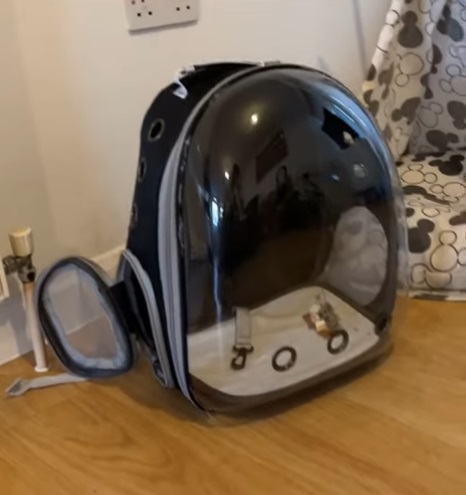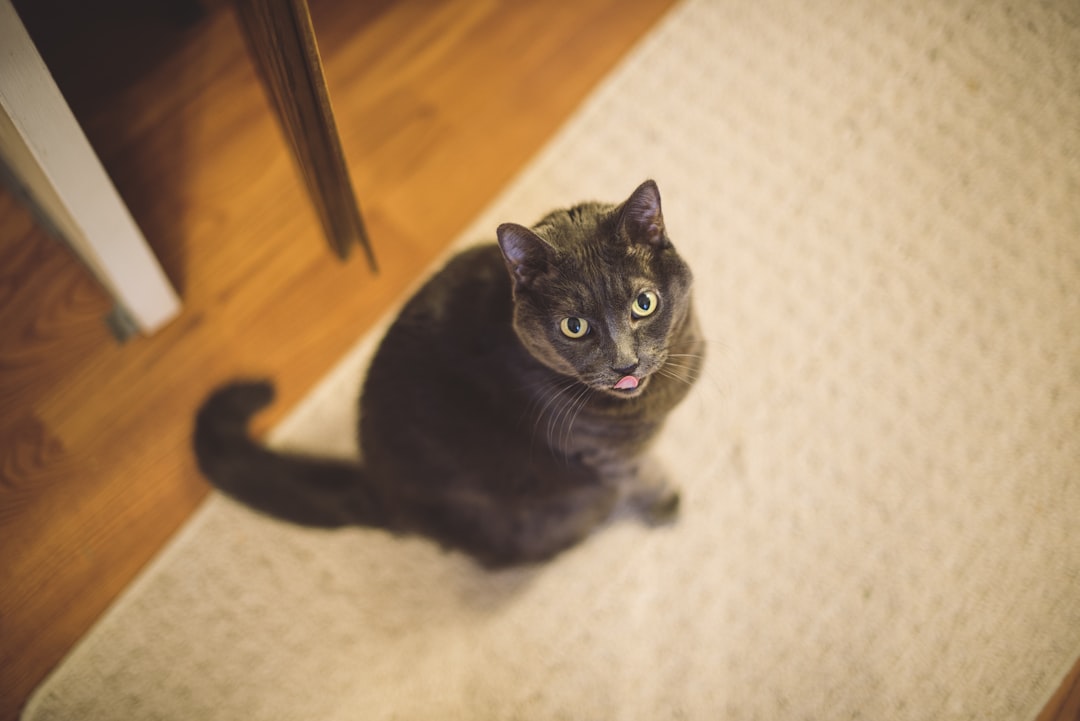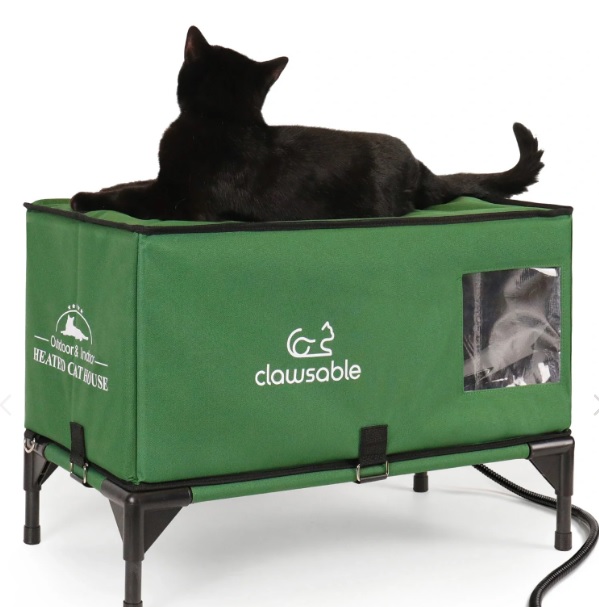Traveling with your feline friend requires careful planning, and choosing the right cat carrier is essential. With various options available, including hard-sided and soft-sided carriers, understanding their features can significantly enhance your travel experience. As you consider factors such as safety, comfort, and budget, it’s important to select a cat carrier that best suits your needs. In this guide, we will explore the best options for traveling with your cat, ensuring that both you and your pet stay safe and comfortable on your journey.
Types of Cat Carriers Available
When it comes to selecting a cat carrier, you’ll find a variety of options designed to cater to different needs and preferences. Understanding the types available will help you make an informed decision for safe travels with your feline friend.
1. Hard-Sided Carriers
- Material: Made from durable plastic or metal.
- Pros:
- Offers robust protection.
- Easier to clean.
- Ideal for larger cats.
- Cons:
- Heavier and bulkier.
- Limited ventilation compared to soft-sided carriers.
2. Soft-Sided Carriers
- Material: Fabric with a sturdy frame.
- Pros:
- Lightweight and portable.
- Collapsible for easy storage.
- Better ventilation.
- Cons:
- Less protective in case of an accident.
- Can be difficult to clean.
3. Backpack Carriers
- Description: Designed to wear on your back like a backpack.
- Pros:
- Convenient for hiking and travel.
- Permits hands-free carrying.
- Cons:
- Limited space for larger cats.
4. Wheelable Carriers
- Description: Feature wheels for easy transport.
- Pros:
- Reduces strain on your back during travel.
- Suitable for heavier pets.
- Cons:
- Can be cumbersome on uneven terrain.
Each type of cat carrier offers unique features tailored for various travel needs. Consider these options to find the most suitable one for your kitty!
Factors to Consider When Choosing a Carrier
Choosing the right cat carrier is essential for a comfortable and safe travel experience for your feline friend. To make an informed decision, consider the following factors:
- Size and Comfort: Ensure the carrier is spacious enough for your cat to stand, turn around, and lie down comfortably. Measure your cat’s height and length before making a purchase.
- Weight and Portability: Lightweight carriers are easier to carry, especially during long trips. Look for carriers with comfortable handles or shoulder straps for easy transportation.
- Ventilation: A well-ventilated cat carrier helps keep your pet cool and calm. Choose a carrier with adequate air holes or mesh panels to promote airflow.
- Security Features: Check for secure latches to prevent escapes. A good carrier should also have locking mechanisms to keep your cat safe and secure while traveling.
- Ease of Cleaning: Opt for carriers with removable liners or easy-to-clean materials. Accidents can happen, so being able to quickly clean the carrier adds convenience.
- Travel Regulations: If traveling by air, confirm that the cat carrier meets airline requirements in terms of size and design. Some airlines have specific guidelines for pet travel.
- Your Cat’s Behavior: Consider your cat’s temperament. If your pet tends to be anxious, a soft-sided carrier might provide a cozier feel, while a hard-sided carrier can offer more protection.
By keeping these factors in mind, you can select the best cat carrier to ensure a positive travel experience for both you and your cat.
Hard-Sided vs Soft-Sided Carriers
When selecting a cat carrier, one crucial decision involves choosing between hard-sided and soft-sided designs. Both types offer unique advantages and disadvantages, so consider your individual needs and preferences before making a choice.
Hard-Sided Carriers
Features:
- Durability: Made from robust plastic or metal, these carriers withstand impact and provide superior protection.
- Ease of Cleaning: Their rigid surfaces are easier to clean after accidents or messes.
- Airflow: Many models feature ventilation holes, ensuring adequate airflow for your cat.
Ideal For:
- Long-distance travel.
- Cats that require extra security or are aggressive.
Soft-Sided Carriers
Features:
- Portability: Lighter and often foldable, making them easy to store and carry.
- Comfort: Most soft-sided carriers have padded interiors, providing a cozy environment for your cat.
- Flexibility: They can fit into tight spaces, such as under airplane seats.
Ideal For:
- Short trips or vet visits.
- Cats that enjoy being in a more comfortable, less restrictive environment.
Quick Comparison Table
| Feature | Hard-Sided Carriers | Soft-Sided Carriers |
|---|---|---|
| Durability | High | Moderate |
| Weight | Heavier | Lighter |
| Ease of Cleaning | Easier | More challenging |
| Comfort | Moderate | High |
Ultimately, both hard-sided and soft-sided cat carriers serve specific purposes. Consider the travel type, your cat’s behavior, and individual preferences when deciding which option suits you best.
Cat Carriers for Air Travel
Traveling by air with your cat requires a specialized carrier that ensures safety and comfort. Here are key considerations and options for choosing the best cat carrier for air travel:
Airline Regulations
- Size Requirements: Each airline has specific dimensional restrictions for pet carriers. Always check these before purchasing.
- Material Compliance: Most airlines prefer carriers made from durable materials that can withstand pressure changes.
Recommended Features
- Ventilation: Look for carriers with multiple vents. Proper airflow helps prevent overheating during flights.
- Secure Locking Mechanism: Choose a cat carrier with reliable closures to ensure your cat remains safely inside.
- Comfortable Bedding: Soft, removable bedding can make the experience more pleasant for your feline friend.
Best Types of Carriers
| Type | Pros | Cons |
|---|---|---|
| Hard-Sided Carriers | Sturdy, easy to clean, often airline-approved | Bulkier, can be heavier |
| Soft-Sided Carriers | Lightweight, flexible, fits under seats | Less durable, may lack structure |
In conclusion, selecting a suitable cat carrier for air travel is essential for a stress-free journey. Prioritize comfort, security, and compliance with airline policies to ensure a smooth flying experience for both you and your beloved cat.
Features to Look for in a Cat Carrier
Selecting the right cat carrier is crucial for your feline’s comfort and safety during travel. Here are key features to consider when choosing one:
- Size and Space: Ensure the cat carrier is spacious enough for your cat to stand, turn around, and lie down comfortably.
- Ventilation: Look for carriers with adequate ventilation, such as mesh panels or openings, to ensure proper airflow.
- Door Design: Choose a carrier with easy-access doors. Top-opening doors are often more convenient for placing anxious cats inside.
- Safety Locking Mechanisms: Verify that the cat carrier has secure latches or locking mechanisms to prevent accidental escapes.
- Ease of Cleaning: Opt for a carrier with removable, washable liners or that is easy to wipe down to maintain hygiene.
- Durability: Select a sturdy material designed to withstand wear and tear; hard-sided carriers often provide more protection.
- Comfort Features: Padding or a comfortable base is essential to create a cozy environment for your cat during travel.
| Feature | Hard-Sided Carrier | Soft-Sided Carrier |
|---|---|---|
| Weight | Heavier | Lighter |
| Ventilation | Limited | Excellent |
| Durability | Very durable | Less durable |
| Ease of Storage | Bulky | Collapsible |
| Comfort Padding | Usually minimal | Often included |
By considering these features, you can select a cat carrier that meets both your needs and your cat’s comfort requirements.
Safety Tips When Traveling with Cats
Traveling with your feline friend can be a delightful experience, but ensuring their safety is paramount. Here are some essential tips for a safe journey with your cat carrier:
- Secure the Carrier: Ensure the cat carrier is securely closed. Double-check that all locks and zippers work properly to prevent escapes.
- Familiarize Your Cat: Before travel, allow your cat to explore the cat carrier at home. Place treats or toys inside to create a positive association.
- Choose the Right Size: The cat carrier should be spacious enough for your cat to stand, lie down, and turn around comfortably but not too large that they can get tossed around during transit.
- Buckle Up: If you’re traveling by car, secure the cat carrier using seat belts. This maintains stability and minimizes jolting movements.
- Avoid Feeding Before Travel: It’s best to withhold food for a few hours before the trip to prevent motion sickness. Instead, offer plenty of water to keep them hydrated.
- Plan Breaks: For long trips, schedule regular breaks for fresh air and bathroom needs. Keep the cat carrier closed until you’re in a secure area.
- Stay Calm: Your demeanor affects your cat. Staying calm and speaking softly can help soothe their anxiety while traveling.
By implementing these safety tips, you can ensure a smooth and enjoyable trip with your furry companion in their cat carrier.
Popular Brands and Models of Cat Carriers
When selecting a cat carrier, it’s essential to consider popular brands and models that have proven reliable and effective. Here are some top choices among pet owners:
| Brand | Model | Type | Key Features |
|---|---|---|---|
| Petmate | Sky Kennel | Hard-Sided | Durable, meets airline requirements, various sizes |
| Sherpa | Deluxe Pet Carrier | Soft-Sided | Airline approved, collapsible, comfortable interior |
| AmazonBasics | Soft-Sided Cat Carrier | Soft-Sided | Affordable, multiple compartments, and easy to clean |
| EliteField | Pet Carrier | Soft-Sided | Lightweight, extra pockets, and foldable design |
| Sleepypod | Mobile Pet Bed | Soft-Sided | Luxurious, crash-tested, comfortable for pets |
Why Choose These Brands?
- Reliability: These brands consistently receive high ratings from users for durability and ease of use.
- Variety: Each brand offers various cat carrier models that cater to different needs (e.g., air travel, daily trips).
- Safety Features: They incorporate features like ventilation, secure latches, and padded interiors, ensuring a safe and comfortable ride for your cat.
When picking a cat carrier, consider your cat’s size, travel needs, and personal preferences. Investing in a reputable model enhances the experience for both you and your feline friend.
Budget-Friendly Cat Carrier Options
Traveling with your feline friend doesn’t have to break the bank. Here are some budget-friendly cat carrier options that combine affordability with functionality:
- Soft-Sided Carriers: These carriers tend to be lighter and are often less expensive than hard-sided options. Look for models with breathable mesh windows for ventilation and comfort.
- Basic Hard-Sided Carriers: Generally sturdy and easy to clean, these carriers come at a lower price point. Many feature top or front openings, making it easier to place your cat inside.
- DIY Carriers: For the crafty cat owner, creating your own carrier from cardboard or repurposed materials can save money. Ensure it’s sturdy and has proper ventilation.
- Second-Hand Carriers: Websites like local classifieds or thrift stores often have used cat carriers at a fraction of the cost. Just inspect for wear and tear before purchasing.
Comparison Table of Budget-Friendly Cat Carriers
| Carrier Type | Pros | Cons | Average Price Range |
|---|---|---|---|
| Soft-Sided | Lightweight, portable | Less durable | $25 – $40 |
| Hard-Sided | Sturdy, easy to clean | Heavier | $30 – $50 |
| DIY | Customizable, no cost | May lack durability | $0 – $15 |
| Second-Hand | Affordable | Potentially worn out | $10 – $30 |
In summary, finding an affordable cat carrier is possible by exploring various options, from soft-sided to DIY solutions. Always assess your cat’s comfort and safety before making a choice.
How to Train Your Cat to Use a Carrier
Training your cat to use a cat carrier can make traveling a stress-free experience for both you and your furry friend. Here are some effective strategies to encourage your cat to feel comfortable in their carrier:
- Familiarization:
- Start by placing the cat carrier in a common area of your home.
- Leave the door open and allow your cat to explore it at their own pace.
- Positive Reinforcement:
- Use treats or your cat’s favorite toys to entice them inside the cat carrier.
- Reward them immediately after they enter to create a positive association.
- Create a Cozy Environment:
- Line the inside of the cat carrier with a soft blanket or their favorite bed.
- Consider adding an item with your scent to help your cat feel more secure.
- Short Sessions:
- Begin with short periods of time where your cat stays inside the carrier.
- Gradually increase the duration to help them adjust.
- Practice Runs:
- Take your cat for short car rides in their cat carrier.
- This helps them get used to the motion and sounds without the stress of a long trip.
- Stay Calm:
- Remain calm and patient throughout the process.
- Your behavior sets the tone for how your cat reacts.
By following these steps, your cat will not only learn to use their cat carrier but will also develop a sense of comfort and security, making travel a much more enjoyable experience for both of you.
Maintaining and Cleaning Your Cat Carrier
Regular maintenance and cleaning of your cat carrier are essential for ensuring your furry friend’s health and comfort during travels. Here are some effective tips to keep your cat carrier in top shape:
- Wipe Down Surfaces: Use a pet-safe disinfectant to wipe the interior and exterior surfaces. This process removes dirt, fur, and bacteria, creating a safe environment for your cat.
- Remove Odors: Sprinkle baking soda inside the carrier, let it sit for about 15 minutes, then vacuum it out. This powerful method neutralizes unpleasant odors that may accumulate over time.
- Check for Damage: Inspect your cat carrier regularly for any damages such as broken zippers, loose handles, or cracks in hard-sided models. Addressing these issues promptly ensures safety.
- Wash Cushions and Liners: If your carrier has removable liners or cushions, wash them according to the manufacturer’s instructions. A clean resting place is vital for your cat’s comfort.
- Air Dry: Always air dry your cat carrier after cleaning to prevent mold and odors. Avoid excessive exposure to direct sunlight, as this can damage some materials.
| Maintenance Task | Frequency | Importance |
|---|---|---|
| Wipe Down Surfaces | Weekly | Hygiene and safety |
| Remove Odors | Monthly | Comfort |
| Check for Damage | Monthly | Safety |
| Wash Cushions/Liners | Monthly | Comfort and cleanliness |
By following these simple maintenance and cleaning tips, you can ensure your cat carrier remains a safe and inviting space for your feline companion, ready for your next adventure together!



